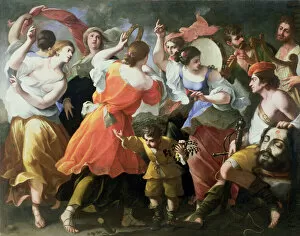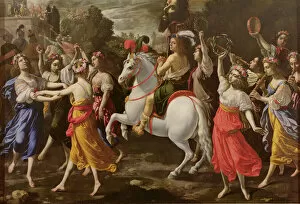Decapitated Head Collection
"Exploring the Enigmatic: The Decapitated Head in Art" From ancient civilizations to modern masterpieces, the decapitated head has captivated artists throughout history
All Professionally Made to Order for Quick Shipping
"Exploring the Enigmatic: The Decapitated Head in Art" From ancient civilizations to modern masterpieces, the decapitated head has captivated artists throughout history. This captivating subject matter transcends time and culture, leaving us intrigued by its symbolism and artistic representation. In Brazilian Indian art, we find an engraving that depicts a hauntingly powerful image of a decapitated head. Rendered in black and white photography, it serves as a reminder of the struggles faced by indigenous communities. Moving back in time, "The Feast of Herod, " a mesmerizing fresco from 1452-64, showcases the gruesome aftermath of John the Baptist's beheading. Its detailed portrayal leaves viewers both fascinated and disturbed by this biblical narrative. Fast forward to 1673 when "The Triumph of David" takes center stage. Here, we witness David holding Goliath's severed head triumphantly aloft—a testament to his victory over adversity. In another masterpiece from around 1500 titled "St. John the Baptist, " tempera on panel brings forth an ethereal depiction of this revered figure's decapitation. The artist skillfully captures both sorrow and reverence within this tragic scene. Shifting gears to South American artistry, Gallo Gallina's color engraving portrays a South American Indian Woman with her striking features accentuated against a backdrop that hints at her ancestral heritage—an homage to indigenous cultures' resilience. Venturing into mythology, "Kali Dancing on Shiva" presents us with an intricate dance between life and death personified through these deities. Kali's fierce energy is palpable as she holds Shiva's severed head—a potent symbol representing destruction for rebirth. Traveling further northward in Europe during the Pictish era, Theodore de Bry enchants us with his colored engraving depicting a mysterious Pictish man—his identity lost but preserved through artistry—leaving us to ponder the stories behind this decapitated head.






